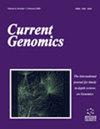Melocular Evolution on Cold Temperature Adaptation of Chinese Rhesus Macaques
IF 1.4
4区 生物学
Q4 BIOCHEMISTRY & MOLECULAR BIOLOGY
引用次数: 0
Abstract
Introduction: Currently, macaques are used as animal models for human disease in biomedical research. There are two macaques species widely used as animal models, i.e., cynomolgus macaques and rhesus macaques. Method: These two primates distribute widely, and their natural habitats are different. Cynomolgus macaques distribute in tropical climates, while rhesus macaques mostly distribute in relatively cold environments, and cynomolgus macaques have a common frostbite problem during winter when they are transferred to cold environments. In order to explore the molecular mechanisms underlying the temperature adaptation in macaques, genetic analysis and natural selection tests were performed. Based on the analysis of heat shock protein genes, DNAJC22, DNAJC28, and HSF5 showed positive selection signals. To these 3 genes, the significantly differential expression had been confirmed between cynomolgus macaques and Chinese rhesus macaques. Molecular evolution analysis showed that mutations of DNAJC22, DNAJC28, and HSF5 in Chinese rhesus macaques could enable them to gain the ability to rapidly regulate body temperature. The heat shock proteins provided an important function for Chinese rhesus macaques, allowing them to adapt to a wide range of temperatures and spread widely. Results: The selection time that was estimated suggested that the cold adaptation of Chinese rhesus macaques coincided with the time that the modern human populations migrated northward from tropic regions to relatively cold regions, and the selection genes were similar. Conclusion: This study elucidated the evolutionary history of cynomolgus macaques and rhesus macaques from molecular adaptation. Furthermore, it provided an evolutionary perspective to reveal the different distribution and adaptation of macaques. Cynomolgus macaques is an ideal biomedical animal model to mimic human natural frostbite.中国猕猴寒冷温度适应的黑眼进化
简介目前,猕猴在生物医学研究中被用作人类疾病的动物模型。被广泛用作动物模型的猕猴有两种,即猕猴和恒河猴。研究方法这两种灵长类动物分布广泛,自然栖息地也不同。猕猴分布在热带气候地区,而猕猴大多分布在相对寒冷的环境中,猕猴在冬季被转移到寒冷环境中时常见冻伤问题。为了探索猕猴温度适应的分子机制,研究人员进行了遗传分析和自然选择试验。根据对热休克蛋白基因的分析,DNAJC22、DNAJC28和HSF5出现了正选择信号。这三个基因在猕猴和中国猕猴之间存在明显的表达差异。分子进化分析表明,中国猕猴DNAJC22、DNAJC28和HSF5的突变可使其获得快速调节体温的能力。热休克蛋白为中国猕猴提供了重要功能,使它们能够适应各种温度并广泛传播。研究结果估计的选择时间表明,中国猕猴对寒冷的适应与现代人类从热带地区向北迁移到相对寒冷地区的时间相吻合,而且选择基因相似。结论本研究从分子适应的角度阐明了猕猴和猕猴的进化历史。此外,该研究还从进化的角度揭示了猕猴的不同分布和适应性。猕猴是模拟人类自然冻伤的理想生物医学动物模型。
本文章由计算机程序翻译,如有差异,请以英文原文为准。
求助全文
约1分钟内获得全文
求助全文
来源期刊

Current Genomics
生物-生化与分子生物学
CiteScore
5.20
自引率
0.00%
发文量
29
审稿时长
>0 weeks
期刊介绍:
Current Genomics is a peer-reviewed journal that provides essential reading about the latest and most important developments in genome science and related fields of research. Systems biology, systems modeling, machine learning, network inference, bioinformatics, computational biology, epigenetics, single cell genomics, extracellular vesicles, quantitative biology, and synthetic biology for the study of evolution, development, maintenance, aging and that of human health, human diseases, clinical genomics and precision medicine are topics of particular interest. The journal covers plant genomics. The journal will not consider articles dealing with breeding and livestock.
Current Genomics publishes three types of articles including:
i) Research papers from internationally-recognized experts reporting on new and original data generated at the genome scale level. Position papers dealing with new or challenging methodological approaches, whether experimental or mathematical, are greatly welcome in this section.
ii) Authoritative and comprehensive full-length or mini reviews from widely recognized experts, covering the latest developments in genome science and related fields of research such as systems biology, statistics and machine learning, quantitative biology, and precision medicine. Proposals for mini-hot topics (2-3 review papers) and full hot topics (6-8 review papers) guest edited by internationally-recognized experts are welcome in this section. Hot topic proposals should not contain original data and they should contain articles originating from at least 2 different countries.
iii) Opinion papers from internationally recognized experts addressing contemporary questions and issues in the field of genome science and systems biology and basic and clinical research practices.
 求助内容:
求助内容: 应助结果提醒方式:
应助结果提醒方式:


